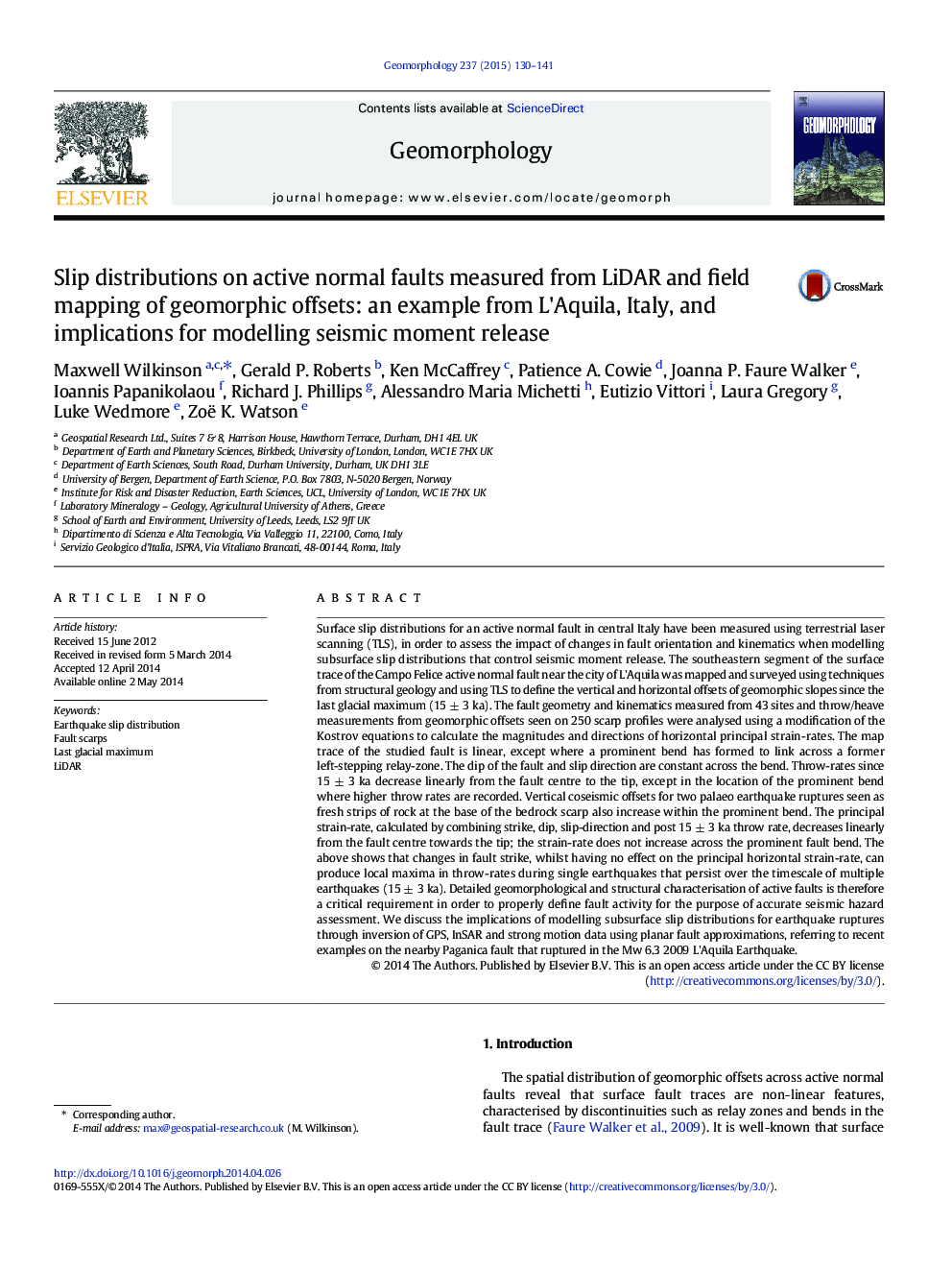| کد مقاله | کد نشریه | سال انتشار | مقاله انگلیسی | نسخه تمام متن |
|---|---|---|---|---|
| 6432226 | 1635412 | 2015 | 12 صفحه PDF | دانلود رایگان |

Surface slip distributions for an active normal fault in central Italy have been measured using terrestrial laser scanning (TLS), in order to assess the impact of changes in fault orientation and kinematics when modelling subsurface slip distributions that control seismic moment release. The southeastern segment of the surface trace of the Campo Felice active normal fault near the city of L'Aquila was mapped and surveyed using techniques from structural geology and using TLS to define the vertical and horizontal offsets of geomorphic slopes since the last glacial maximum (15 ± 3 ka). The fault geometry and kinematics measured from 43 sites and throw/heave measurements from geomorphic offsets seen on 250 scarp profiles were analysed using a modification of the Kostrov equations to calculate the magnitudes and directions of horizontal principal strain-rates. The map trace of the studied fault is linear, except where a prominent bend has formed to link across a former left-stepping relay-zone. The dip of the fault and slip direction are constant across the bend. Throw-rates since 15 ± 3 ka decrease linearly from the fault centre to the tip, except in the location of the prominent bend where higher throw rates are recorded. Vertical coseismic offsets for two palaeo earthquake ruptures seen as fresh strips of rock at the base of the bedrock scarp also increase within the prominent bend. The principal strain-rate, calculated by combining strike, dip, slip-direction and post 15 ± 3 ka throw rate, decreases linearly from the fault centre towards the tip; the strain-rate does not increase across the prominent fault bend. The above shows that changes in fault strike, whilst having no effect on the principal horizontal strain-rate, can produce local maxima in throw-rates during single earthquakes that persist over the timescale of multiple earthquakes (15 ± 3 ka). Detailed geomorphological and structural characterisation of active faults is therefore a critical requirement in order to properly define fault activity for the purpose of accurate seismic hazard assessment. We discuss the implications of modelling subsurface slip distributions for earthquake ruptures through inversion of GPS, InSAR and strong motion data using planar fault approximations, referring to recent examples on the nearby Paganica fault that ruptured in the Mw 6.3 2009 L'Aquila Earthquake.
Journal: Geomorphology - Volume 237, 15 May 2015, Pages 130-141